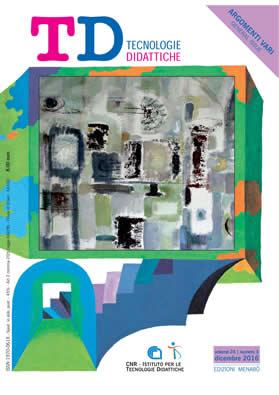Automatic evaluation of partial solutions
Main Article Content
Abstract
Article Details
Section
Authors who publish with this journal agree to the following terms:
- Authors retain copyright and grant the journal right of first publication with the work simultaneously licensed under a Creative Commons CC BY 4.0 Attribution 4.0 International License.
- Authors are able to enter into separate, additional contractual arrangements for the non-exclusive distribution of the journal's published version of the work (e.g., post it to an institutional repository or publish it in a book), with an acknowledgement of its initial publication in this journal.
- Authors are permitted and encouraged to post their work online (e.g., in institutional repositories or on their website) prior to and during the submission process, as it can lead to productive exchanges, as well as earlier and greater citation of published work (See The Effect of Open Access)
References
Ashton, H. S., Beevers, C. E., Korabinski, A. A., & Youngson, M.A. (2006). Incorporating partial credit in computer-aided assessment of Mathematics in secondary education. British Journal of Educational Technology, 37(1), 93-119.
Ashton, H., Beevers, C., & Thomas, R. (2008). Can e-assessment become mainstream? In Proceedings of the 12th Computer Assisted Assessment Conference. Loughborough University.
Assessment Reform Group (2002). Assessment for learning: 10 principles. British Educational Research Association.
Baldacci, M. (2010). Curricolo e competenze. Milano, Italia: Mondadori.
Black, P. J., & Wiliam, D. (2009). Developing the theory of formative assessment. Educational Assessment, Evaluation and Accountability, 21(1), 5-31.
Butcher, P., Hunt, T., & Sangwin, C. (2013). Embedding and enhancing eAssessment in the leading open source VLE. In Proceedings of the HEA STEM Conference. Higher Education Academy.
Cerval-Pena, E. R., Hermans, D. F. M., & Sangwin, C. J. (2008). Automatic assessment of steps in students’ work. In Proceedings of the 11th International Congress on Mathematical Education. ICME-11.
Conati, C., (2009). Intelligent Tutoring Systems: new challenges and directions. In Proceedings of the 21th International Joint Conference on Artificial Intelligence. Menlo Park, CA: AAAI Press.
Crooks, T. (2001). The validity of formative assessments. British Educational Research Association Annual Conference. University of Leeds.
Fabrizio, A., Fiorentino, G., & Pacini, G. (2006). Valutazione automatica di test con risposta aperta. TD Tecnologie Didattiche, 14(2), 52-61.
Fabrizio, A., Fiorentino, G., & Pacini, G. (2011). Valutazione automatica delle abilità di problem-solving. In Atti del convegno Didamatica 2011, Torino.
Fiorentino, G. (2010). A result-driven approach to the design of self-regulated problem-solving environments. In Proceedings of the STELLARTACONET Conference. Aachen, Belgium: Shaker Verlag.
Fife, J. H. (2011). Automated scoring of CBAL Mathematics tasks with m-rater. Research Memorandum, ETS RM-11-12.
Polya, G. (1957). How to solve it (2. ed.). Princeton, NJ: Princeton University Press.
Sangwin, C. (2012). Computer aided assessment of Mathematics using STACK. In Proceedings of the 12th International Congress on Mathematical Education. ICME-12.
Shores, L. R., Hoffmann, K. F., Nietfeld, J. L., & Lester, J. C. (2012) The role of sub-problems: supporting problem solving in narrative-centered learning environments. Intelligent Tutoring Systems. Lecture Notes in Computer Science, Vol. 7315. Berlin, Germany: Springer Verlag.
Ufficio Scolastico Regionale per la Lombardia (2013). La Didattica per competenze. Dossier, Ufficio Scolastico Regionale per la Lombardia, Ufficio IV.
Vanlehn, K. (2006). The behavior of tutoring system. International Journal of Artificial Intelligence in Education, 16(3), 227-265. BIBLIOGRAFIA

